The Lord Howe Island Rodent Eradication Operation
IAN HUTTON (Naturalist and resident on Lord Howe Island for 44 years)
Wherever humans have settled islands, they have brought their domestic animals along, and Lord Howe Island has been no exception. About 1800, sailors put pigs and goats onto the Island for food and settlers brought farm animals and domestic animals - horses, cats, dogs, along with mice. The worst feral mammal to arrive was the black rat, Rattus rattus, that got onto the island in 1918 during the grounding of the cargo ship Makambo(1). Rats quickly multiplied and wreaked havoc with the wildlife – within ten years the rats had eaten five land birds into extinction, later two plant species and a number of invertebrates had disappeared(2).
Lord Howe Island
In the 1970’s, environmental surveys identified the damage being done to the island’s flora and fauna. Of particular concern was the possible extinction of the endemic flightless bird, the woodhen. Once thriving all over the island, this bird was confined to just 20 individuals surviving on the summits of the 875-metre-high mountains in the cool, damp mist forest.
In 1980 the conservation story began with the rescue of the woodhen. The Island men shot 180 wild pigs in the mountains and rangers trapped about 80 feral cats. In 1982 a ban on domestic cats was introduced and dogs strictly controlled. As a result, the bird life increased dramatically. Black noddy and little shearwaters returned to the Island to breed by 1990. A woodhen captive breeding program managed by New Zealander Glen Fraser raised 93 individuals and five years after their release the population was about 230.
In 1999 a New Zealand goat hunting team, along with locals, removed 384 goats over a three-month period. The recovery in plant life was remarkable.
Next Would be Rodent Eradication
For me the rat eradication for Lord Howe Island started in 1997 when New Zealand documentary producer Rod Morris visited the Island and told me of the exciting progress in techniques being developed to remove rats from offshore islands around New Zealand. From this visit I was inspired to think it may be possible one day to remove rats from Lord Howe Island, and so I began documenting the damage to flora and fauna by rats on the Island, and shared this information with researchers, LHI Board staff and the public through lectures. In 2001 the LHI Board CEO and myself attended the Invasive Species Conference in NZ where we met rodent eradication practitioners, Alan Saunders and Derek Brown, who wrote the LHI Rodent Eradication Feasibility Study in 2003. Nine years later the Draft Rodent Eradication plan was prepared, and the project successfully carried out in 2019.
The team responsible for the eradication programme. Andrew Walsh (Project Manager), Grant Harper (Ground Operations Manager) and Keith Springer (Aerial Operations Manager)
However, almost all Islands where the eradications had been undertaken have been uninhabited, but Lord Howe Island had a community of about 350 people most of whom were descendants of the earliest families that arrived in the mid-1800s. The social interactions around the proposed eradication were quite complex and came down to some people in this small remote oceanic island community distrusting scientists and governments. Emotions ran high and the advisors could see that without the support of the whole community, the project was at risk of failure. So the programme stalled, and LHI Board and scientists began a journey of trying to sway the small number of dissenters on the Island. This took some years and at the time the eradication operation began there was still a small number opposing the project, even involving court actions while the project was half underway. The message for future eradications: engage social scientists early to give the community ownership of the project.
The Project Manager, Andrew Walsh, was appointed in 2015 and began obtaining permits, planning the budget, contracting key personnel, etc. It was a huge task, eventually involving about 160 personnel, engaged from the Island and around the world with people from New Zealand, U.K. Mexico and more. The various health, safety and environmental reports written for rodent eradication on Lord Howe Island will be blueprints for other inhabited islands.
Because the island was inhabited the usual method of carefully delivering baits from helicopters could not be used across the whole Island. New Zealander Grant Harper was Ground Operations Manager in charge of ground baiting. The settlement area had to have bait stations to secure baits from pets and children, and to avoid baits ending up in rainwater tanks. But to ensure that every mouse had access to a bait the bait stations were placed on a 10x10m grid across the 300 ha of the Settlement – or a total of 19,000 stations! Mice and rats were known to have access to most buildings, particularly roof spaces and under floors so every building – houses, churches, the museum, air terminal etc. had to have small mouse bait stations: a total of 3,500. All of these bait stations had to be topped up with baits weekly for 3 months, and a special App for a mobile device to record all the baiting requirements was designed for the project.
Before any baits could be put out, two endemic land birds, the woodhen and currawong, that may have been at risk, had to be caught and caged in special cages designed for this project. Staff from Taronga Zoo Sydney ran this project. Three years earlier they had constructed a pen to carry out a woodhen captive trial, developed with experience gained from similar projects in New Zealand with Weka, the Woodhens’ closest relatives. A total of 230 Woodhens and 120 Currawongs were caught and looked after for eight months.
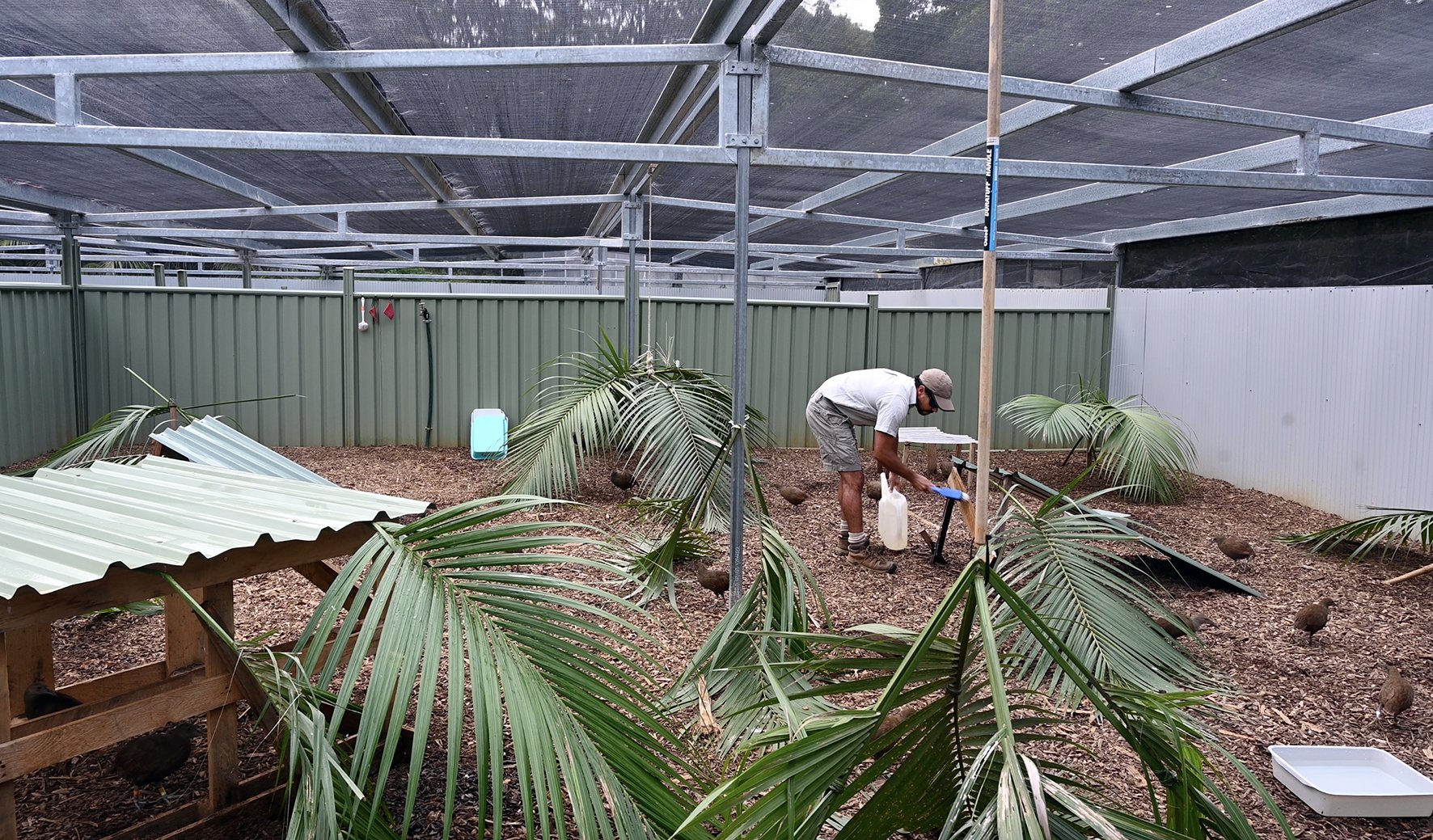

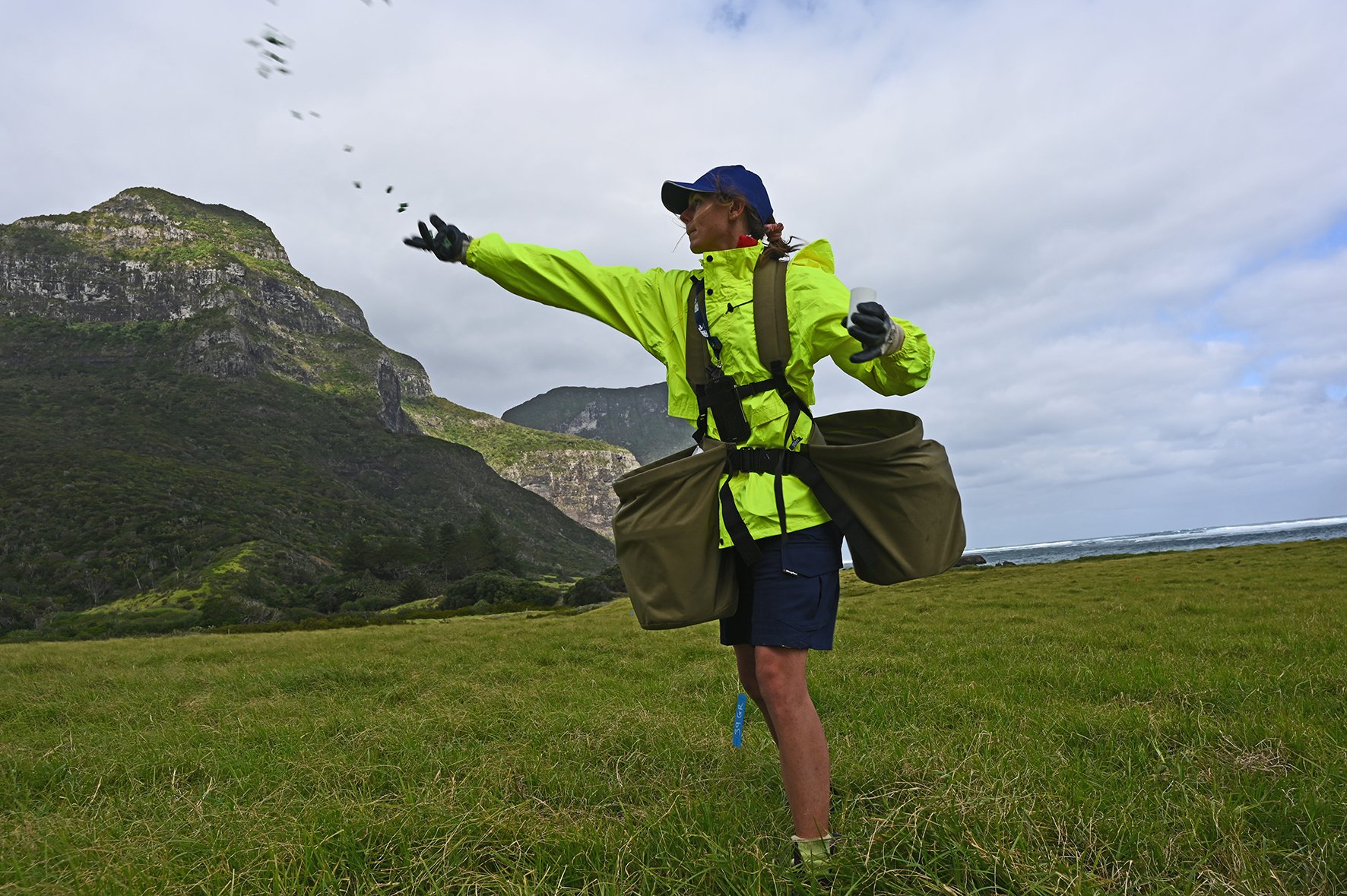

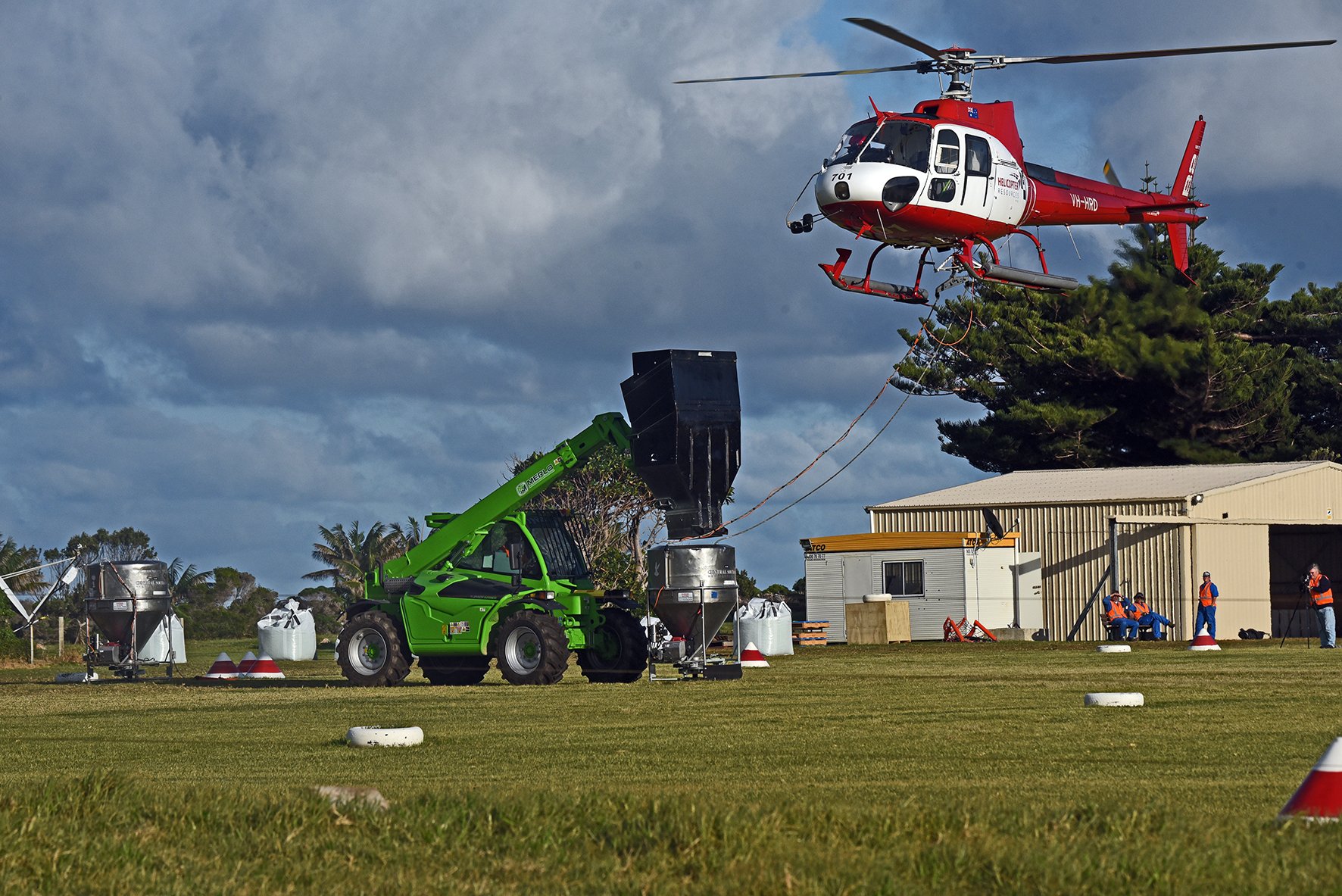
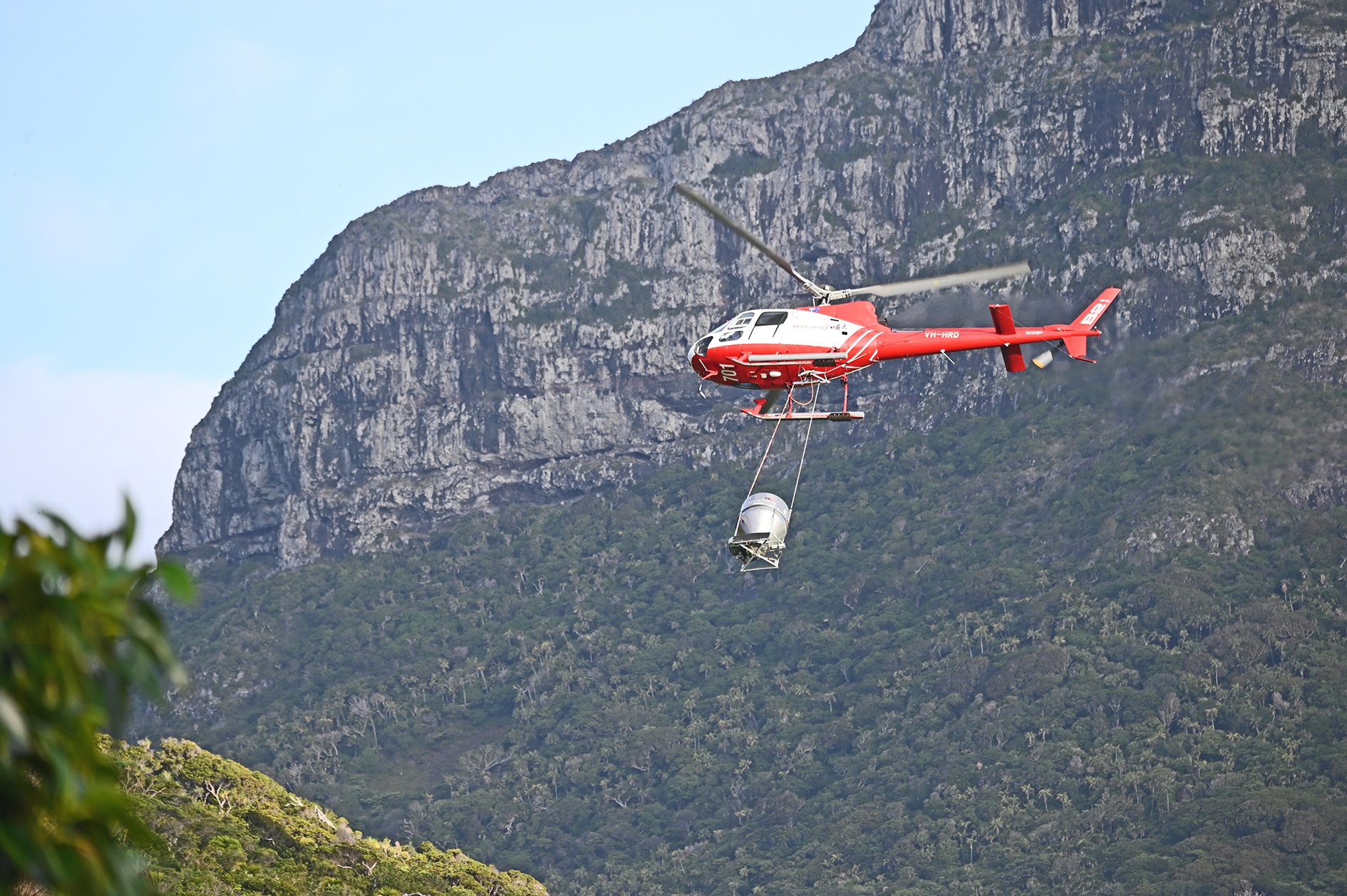
With the birds safely in care, the rodent baits were finally laid out in May 2019. As forested highlands of the Island were aerially baited, there was an overlap between the bait station grid and the aerially baited areas, using hand-broadcast bait on a 20m grid. This was carried out at the same time as the helicopters were dropping bait. New Zealander Keith Springer ran the aerial baiting operation. Highly experienced pilots delivered bait pellets with precision around the vertical cliffs of the southern mountains.
For some of the cattle owners who wanted to retain cattle on the Island, bait stations were deployed in their paddocks, with wooden roofs placed over each bait station so cattle could not trample them. Domestic chickens were either removed or housed in special pens to minimise food available to rodents. In addition, project staff collected food waste twice weekly in special buckets from all houses and lodges, and this food waste was taken to a composter on the Island.
There were two bait drops about four weeks apart, in June and again in July 2019. There was great relief with the accomplishment of this, as weather in winter can be quite wet and windy on the Island.
By August most of the rodents were removed, but there was still evidence of some rats remaining in the settlement areas, which appeared to be avoiding the bait stations, so the project team focused on detecting and eliminating those remaining rodents, using sniffer dogs, cameras and bait stations. In mid-September it was believed the last rat was found and killed.
The project seemed a success, but we were to wait for two years to confirm this. Dog handlers were contracted to regularly visit and search the whole Island for any signs of rodents.
In April 2021 a resident saw a rat run across the road next to the cemetery. Rangers were alerted and two rats were detected and shot. Grant and Keith were again brought to the Island to detect and remove an incipient population of about 96 rats over 5 months. DNA sampling showed that this population was derived from as few as two rats. Mice have not been seen since June 2019.
Subsequently, biosecurity has been tightened to ensure minimal chance of rodents getting back on the Island. This is not an easy task on an island which has a cargo ship that brings supplies each fortnight, daily aircraft flights, and visiting yachts. A system of rodent monitoring devices are deployed, and inspected regularly to detect any rats should they find their way back onto the Island.
In July 2023 teams of dogs and handlers were brought to the Island and a thorough search of the whole Island was made, and after a review of the Search Report the Island was declared rodent free by DOC’s Island Eradication Advisory Group.
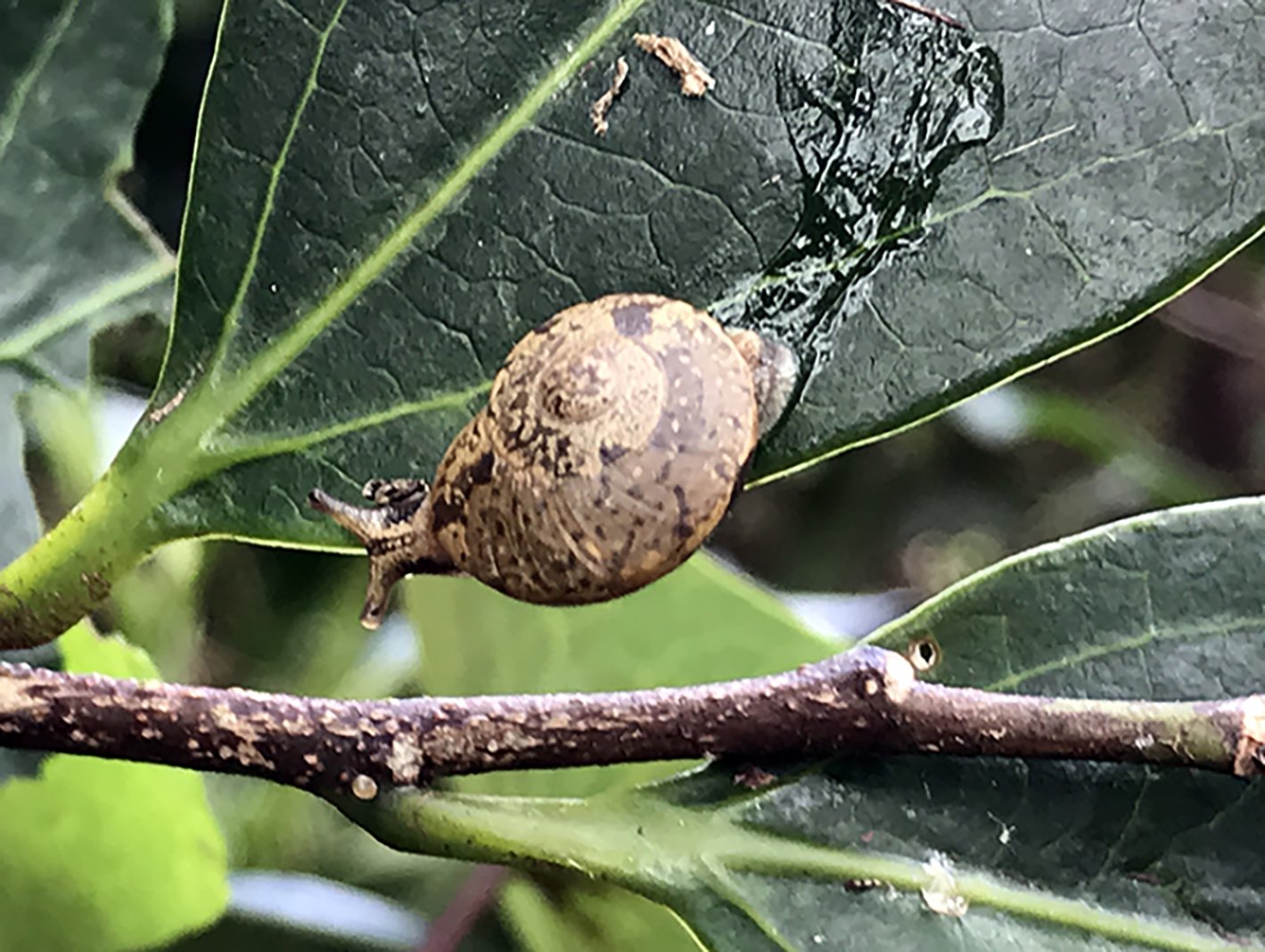
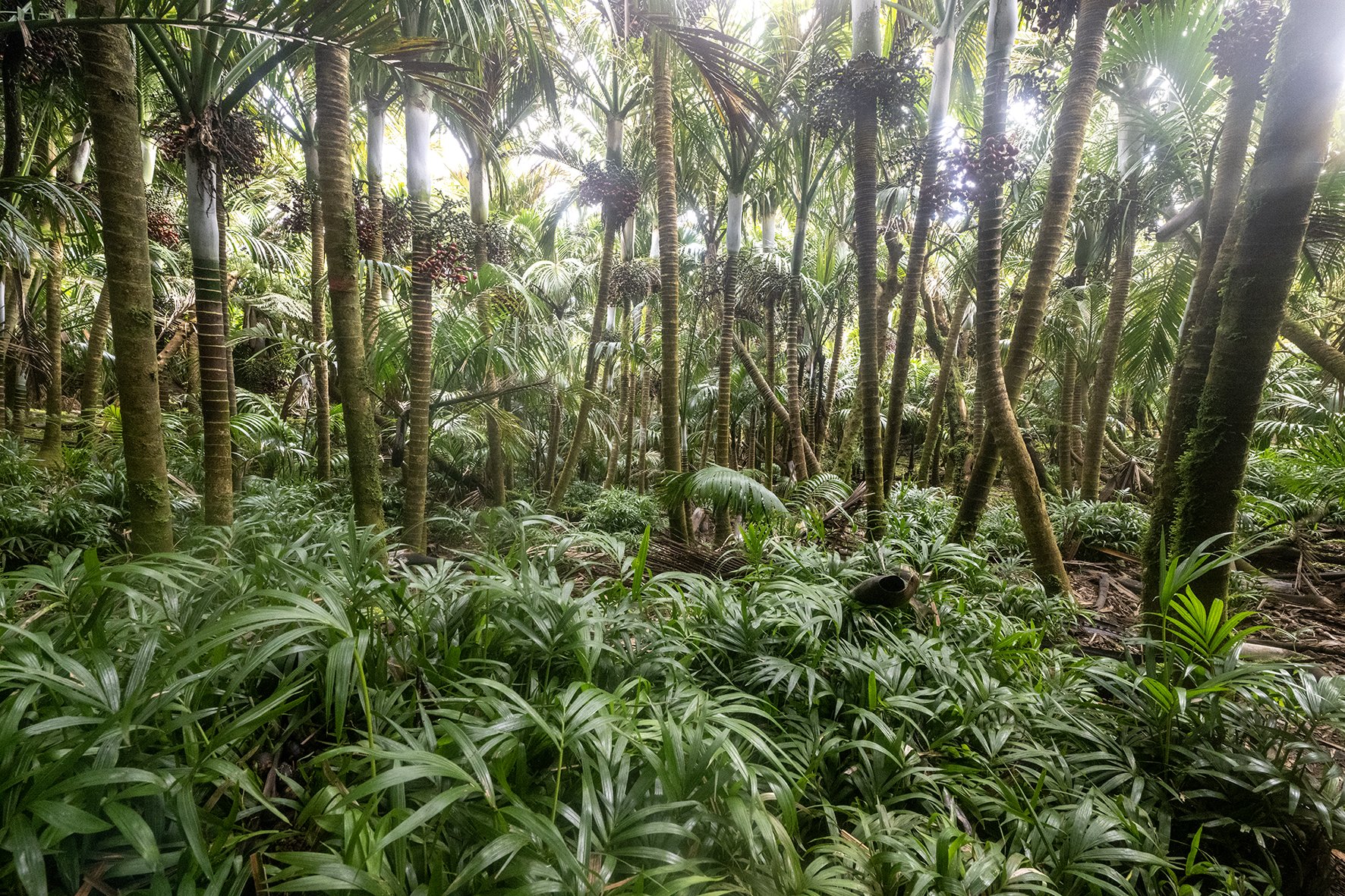
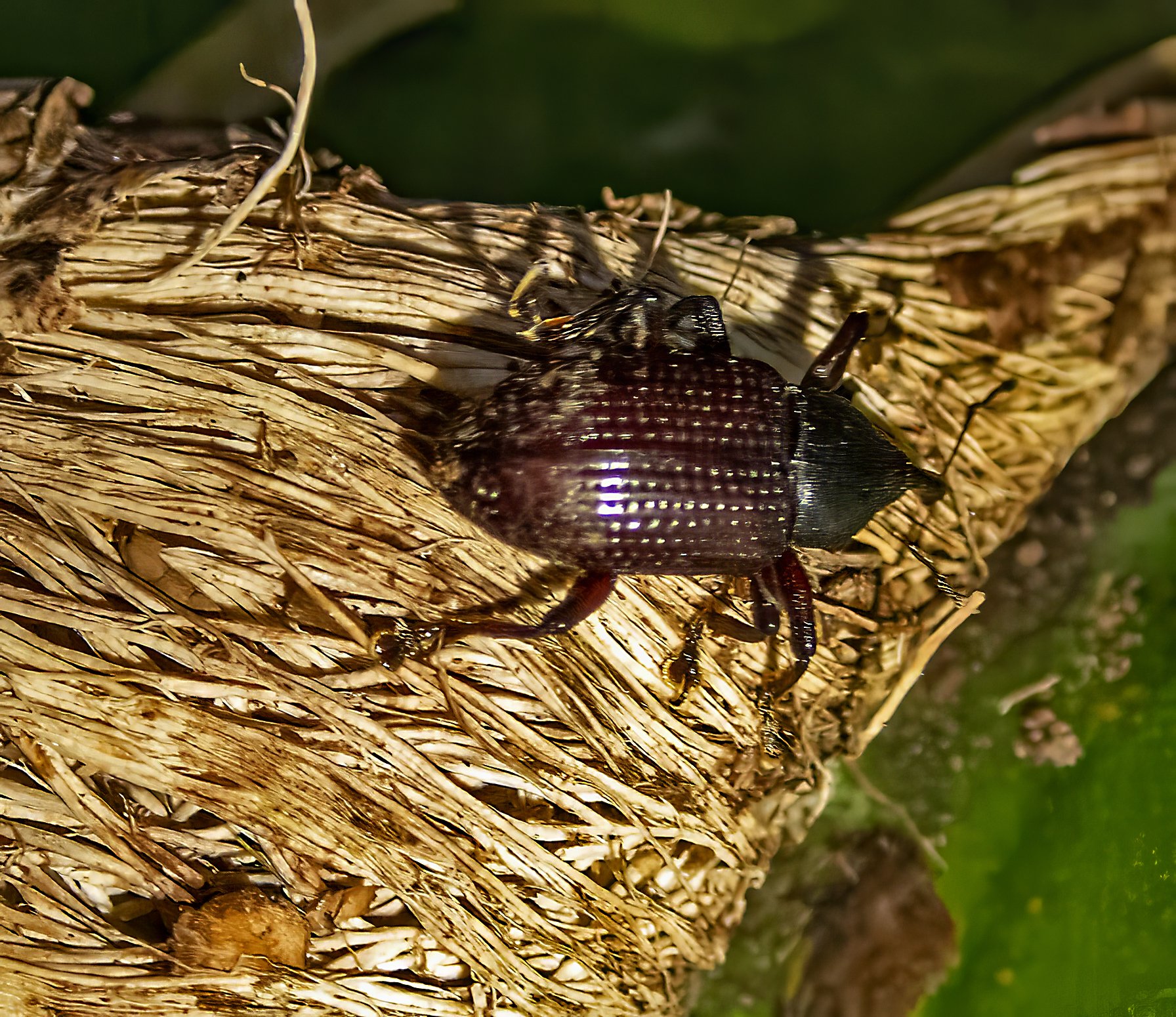
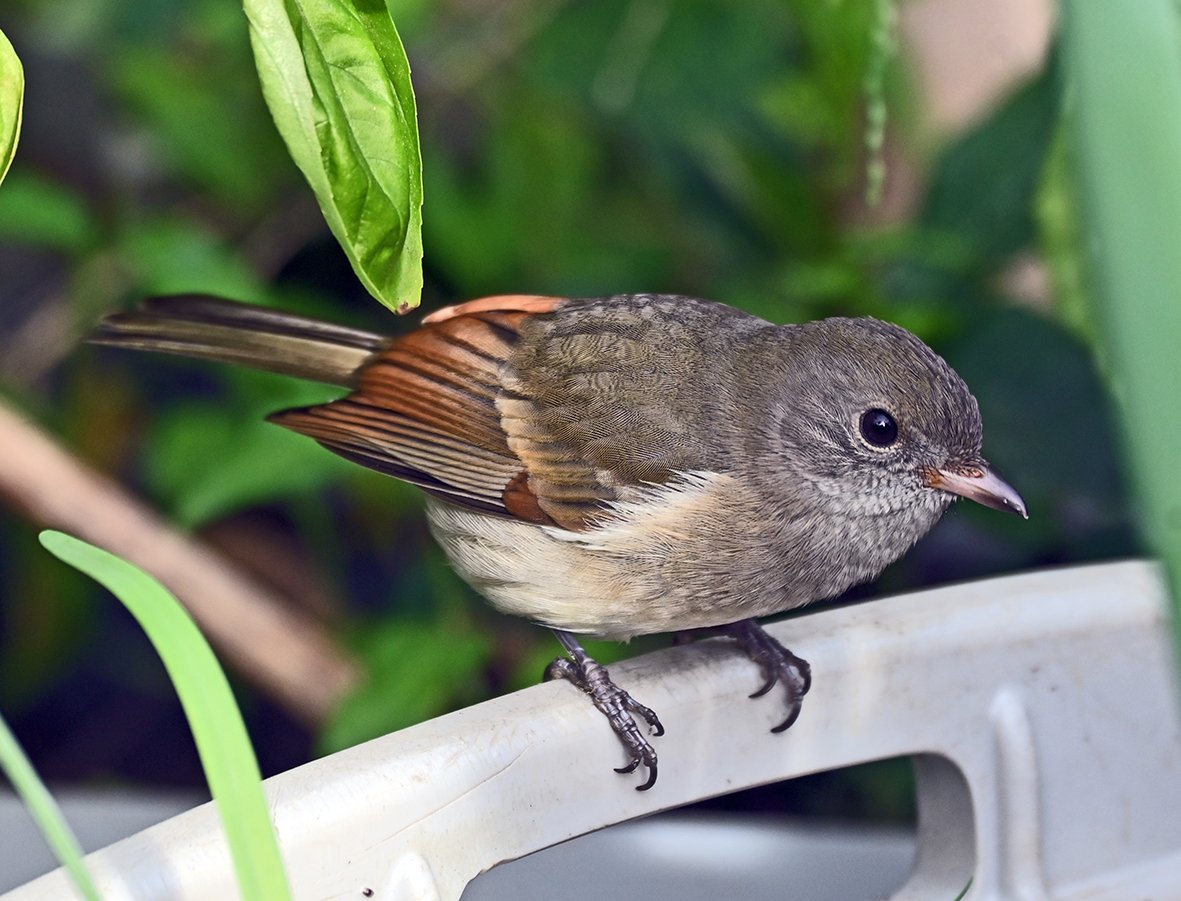

The benefits of removal of rodents has exceeded all expectations. The woodhens rapidly doubled in numbers within six months after the eradication operation, and five years later an estimated 2,000 woodhens are present. All bird life is increasing, as the food rodents were consuming is now available. Staff from the Australian Museum snail and beetle groups have carried out post-rodent eradication surveys and these invertebrates have shown large increases.
The recovery in plant life is also showing remarkable recovery, with thousands of seedlings of most species sprouting up. This is most evident on Mount Gower summit with the endemic Hedyscepe canterburyana and Lepidorrhachis mooreana palms.
In February 2024 I was on a four-day palm survey on Mount Gower as part of monitoring post rodent eradication. During that trip I also collected beetles for Dr Chris Reid of the Australian Museum. One beetle collected turned out to be an endemic weevil, Howeotranes insularis, that had not been seen since rats arrived in 1918 and officially listed as extinct. Despite predation by rats and mice for over 100 years, these beetles had survived in exceptionally small numbers, and now are breeding well and being “re-discovered”.
It is expected there will be many more examples like this as time goes on, and there will be a transformation of the forest and its inhabitants like no one alive has seen. This project on Lord Howe Island is an inspiration for how species and ecosystems can recover with removal of feral animals introduced by humans.
Ian Hutton has lived on Lord Howe island since 1980 and has been involved in documenting the Island’s flora and fauna, collaborating on over 50 scientific studies, presenting all of this with guide books, nature tours, museum display and lectures. He has been a strong advocate for many conservation issues on the island – weed eradication, rodent eradication, plastic impacts on sea birds, and now Climate Change. All images in this article were taken by Ian.
A video of the eradication programme can be viewed at:
References
Lord Howe Island Board 2009, Draft Lord Howe Island Rodent Eradication Plan, Lord Howe Island Board, Lord Howe Island. ISBN: 978-0-9807065-0-5 October 2009
Fifty years of rodent eradications in New Zealand: another decade of advances. James C Russell and Keith G Broome. New Zealand Journal of Ecology (2016) 40(2): 197-204


